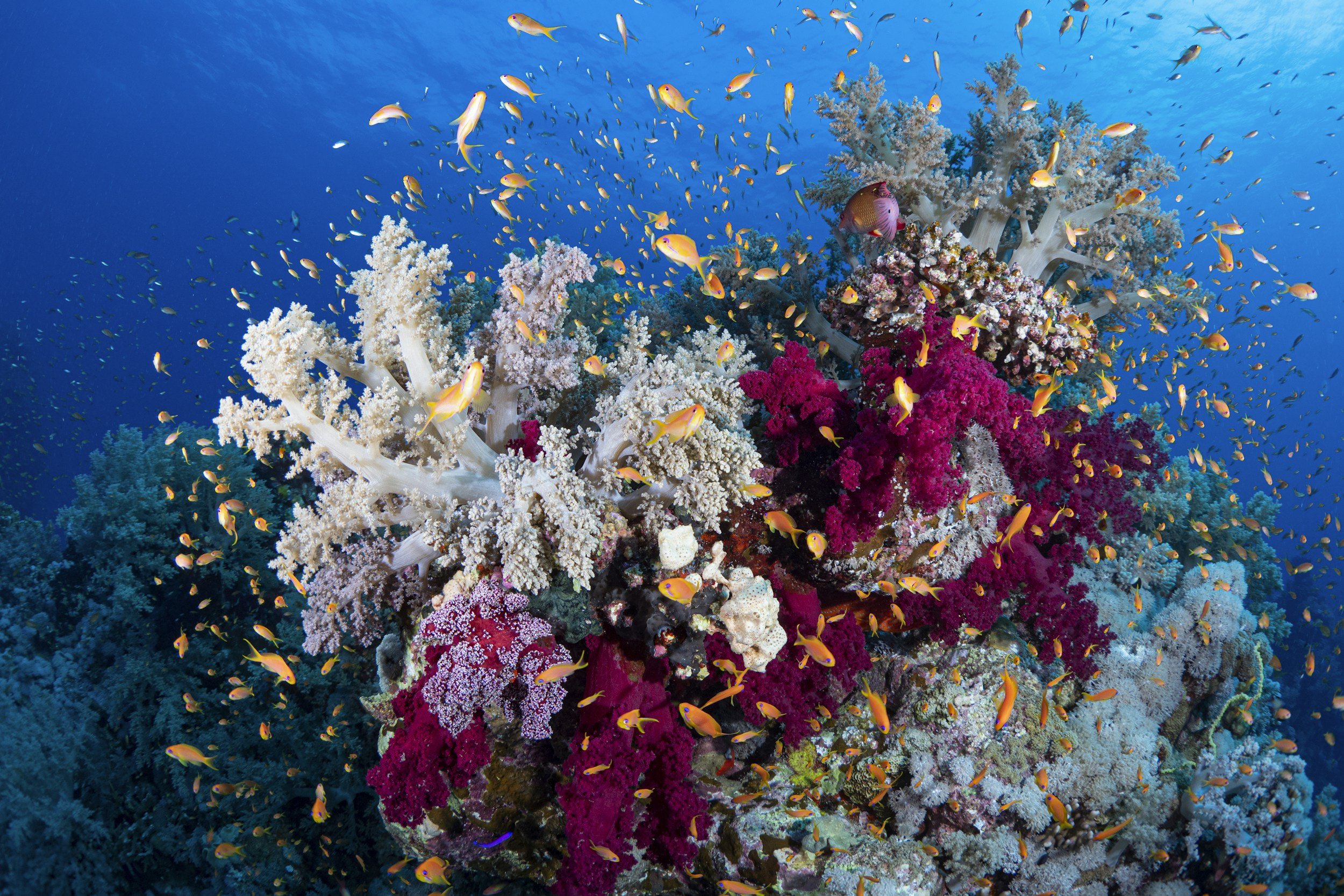
Collaborative science and community-building.
-
Planning and Partnerships.
Projects start in the community. We partner with local community members, scientists, labs, and organizations to create a restoration roadmap based on the needs and capacities of that specific area. We look at the different approaches and determine which are likely to be the most effective, conduct a rigorous risk assessment, and make a plan to fill in critical data gaps for potential implementation. We provide funding, scientific, and logistical support for implementing reef restoration projects in the lab, controlled field trials, and scaling in the field, and connect practitioners of similar approaches in different areas.
-
Modeling and Lab Studies.
In many cases, modeling and laboratory experiments will be necessary to understand the effects of a given approach on local organisms in order to assess potential environmental risks. Based on the restoration roadmap we co-create with our partners, we can fund, support, and/or lead modeling and/or lab studies intended to assess the potential effectiveness of proposed ecological restoration. All studies will be extensively documented throughout the process and written up formally, and all data and findings must be open source and easily accessible.
-
Field Studies and Implementation.
Numerical models and lab studies offer low-dimensional generalizations of system behavior that can help us predict outcomes, but in all cases, controlled field trials are necessary to understand an ecosystem’s actual response to an intervention prior to implementation. In collaboration with local partners, we can fund, design, and/or lead pilot studies in controlled environments to assess the proposed restoration technique(s) for safety and effectiveness. We use automated monitoring and analysis techniques where possible, and design field studies in ecologically-meaningful timeframes (before, during, after, and long after an intervention). Reversibility is a key consideration of our risk assessment, and any equipment not providing an active benefit is removed after treatment. The results of field trials are only generalized where it is ecologically meaningful to do so.
Field trials with demonstrated improvement are eligible for implementation at scale, and our team of engineers can optimize production, deployment, and retrieval of equipment at unbounded scales.
-
Digital Ecosystems.
As analytical tools become increasingly powerful, digital representations and numerical models of coral reefs undergoing restoration are critically important for preserving and making use of the effort that goes into these activities. All experimental and implementation projects will have associated 3D and numerical models, with the intention of turning each of these into digital twins. These open source models also provide robust metrics of improvements, that can be used by communities to provide proof points for biodiversity credits, Environmental Social Governance (ESG) goals and other conservation finance initiatives.
We are also planning a coral reef restoration cryptocurrency and coral reef prediction markets as trials for alternative funding, verification, and education schemes for restoration activities.
-
Coral Reef Ecosystem Regeneration Planner (CRERP) Tool
Our Coral Reef Ecosystem Regeneration Planner (CRERP) is a decision tool and permitting template that simplifies the complexity of local ecologies to generate Ecosystem Regeneration Plans for any given reef.
The purpose of this tool is to facilitate rapid scaling of ecosystem regeneration for global impact, without compromising the integrity of the system by applying techniques that are inappropriate for that reef’s unique dynamics.
The CRERP tool will be open-source and hosted on our website. Users will be able to generate a custom plan based on their specific location, informed by a combination of AI-driven environmental analyses and user-provided ecosystem traits, stressors, and resources.

